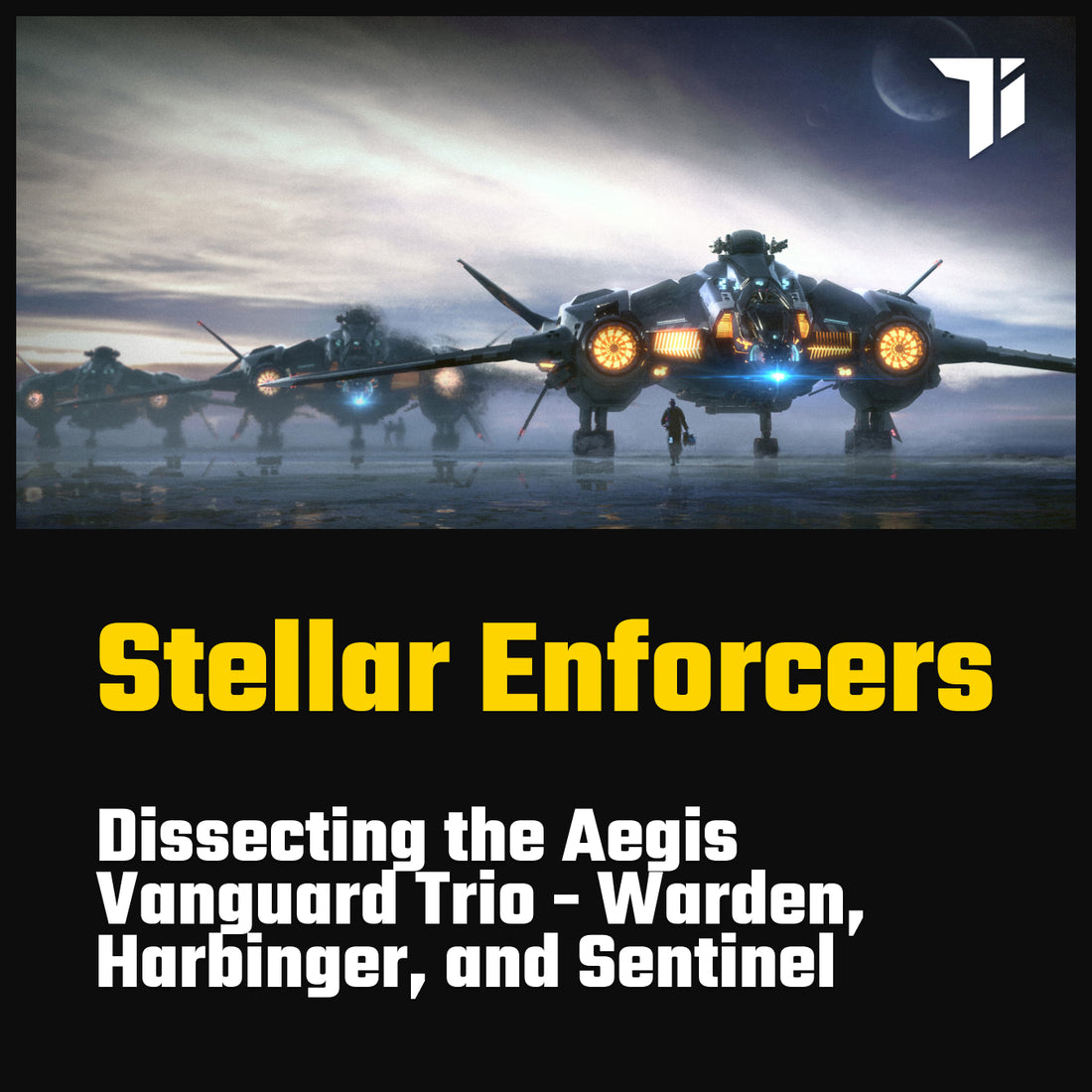The Aegis Vanguard series is a collection of heavy fighters designed for long-range engagements and deep space missions. The three main variants in the series are the Vanguard Warden, Harbinger, and Sentinel. Each variant has its specific role and unique attributes, making them suitable for different situations. In this in-depth comparison, we'll analyze their strengths and weaknesses.

Vanguard Warden
The Vanguard Warden is the base model of the series, designed as a long-range heavy fighter with a focus on durability and firepower.
Pros:
- Durability: The Vanguard Warden is built to withstand heavy damage with a robust hull and strong shields, making it ideal for prolonged engagements.
- Firepower: The Warden boasts considerable firepower, with four size 2 weapons on the nose, a size 5 hardpoint on the turret, and a size 4 hardpoint under the nose.
- Range: The Vanguard series is known for its long-range capabilities, and the Warden is no exception, allowing for extended missions without needing to refuel or rearm frequently.
Cons:
- Maneuverability: As a heavy fighter, the Warden lacks the agility of lighter fighters, making it more challenging to evade enemy fire.
- Speed: The Warden's straight-line speed is not as fast as some other fighters, potentially making it harder to disengage from unfavorable engagements.

Vanguard Harbinger
The Vanguard Harbinger is the bomber variant of the series, designed for long-range strike missions with additional focus on torpedo delivery.
Pros:
- Torpedo Capability: The Harbinger's primary strength is its ability to carry three size 5 torpedoes, making it a significant threat to larger ships and installations.
- Firepower: Like the Warden, the Harbinger boasts considerable firepower with four size 2 nose weapons, a size 5 turret hardpoint, and a size 4 hardpoint under the nose.
- Range: The Harbinger shares the same long-range capabilities as the Warden, making it an excellent choice for extended missions.
Cons:
- Maneuverability: The Harbinger, like the Warden, sacrifices agility for durability, making it harder to evade incoming fire.
- Speed: The Harbinger is not as fast as some other fighters, potentially making disengagement difficult in unfavorable situations.

Vanguard Sentinel
The Vanguard Sentinel is the electronic warfare (EW) and support variant of the series, designed for intelligence gathering, disrupting enemy systems, and providing electronic support to allies.
Pros:
- Electronic Warfare Suite: The Sentinel's unique strength is its advanced EW suite, allowing it to detect, analyze, and disrupt enemy communications and systems.
- Support Role: The Sentinel can support allies by jamming enemy radar, disrupting enemy systems, and providing valuable intelligence.
- Firepower: Though not as heavily armed as the Warden or Harbinger, the Sentinel still has substantial firepower with four size 2 nose weapons, a size 5 turret hardpoint, and a size 4 hardpoint under the nose.
Cons:
- Maneuverability: Like the other Vanguard variants, the Sentinel sacrifices agility for durability, making it more challenging to dodge enemy fire.
- Speed: The Sentinel's speed is not as fast as some other fighters, which can make disengagement more difficult.
In conclusion, the Vanguard series offers powerful long-range heavy fighters designed for specific roles. The Warden excels as a durable heavy fighter, the Harbinger brings devastating torpedo capabilities for strike missions, and the Sentinel specializes in electronic warfare and support roles. Depending on your preferred playstyle and objectives, each of these Vanguard variants offers unique strengths and opportunities.





